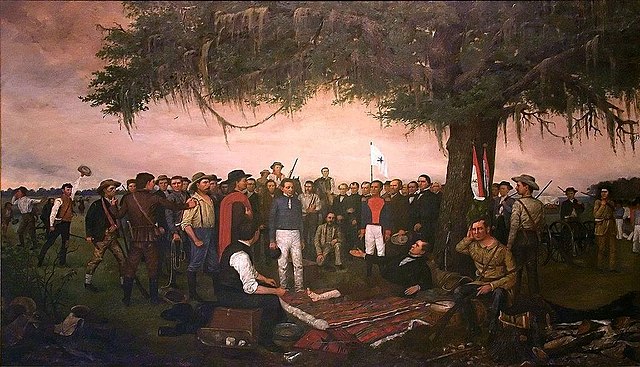Sabine River (Texas–Louisiana)
The Sabine River is a 360-mile (580 km) long river in the Southern U.S. states of Texas and Louisiana, From the 32nd parallel north and downstream, it serves as part of the boundary between the two states and empties into Sabine Lake, an estuary of the Gulf of Mexico.
Sabine River at Logansport, Louisiana
The Sabine just south of U.S. Route 80 near Big Sandy, Texas
The Sabine forms the Louisiana/Texas boundary at Toledo Bend Reservoir west of Many, Louisiana.
Texas is the most populous state in the South Central region of the United States. It borders Louisiana to the east, Arkansas to the northeast, Oklahoma to the north, New Mexico to the west, and the Mexican states of Chihuahua, Coahuila, Nuevo León, and Tamaulipas to the south and southwest. Texas has a coastline on the Gulf of Mexico to the southeast. Covering 268,596 square miles (695,660 km2), and with over 30 million residents as of 2023, it is the second-largest U.S. state by both area and population.
Early Native American tribal territories
Stephen F. Austin was the first American empresario given permission to operate a colony within Mexican Texas.
Surrender of Santa Anna. Painting by William Henry Huddle, 1886.
On March 2, 1936, the U.S. Post Office issued a commemorative stamp commemorating the 100th anniversary of the Texas Declaration of Independence, featuring Sam Houston (left), Stephen Austin and the Alamo.







